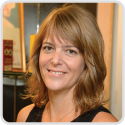How Midwives Learn: Origins of The Home Birth Controversy

Recent media coverage of the increasing popularity of out-of-hospital births in the U.S. has generated a widespread debate about the politics and place of birth. This is not a new phenomenon. In the 1970s, a quiet revolution spread across cities and suburbs, towns and farms, as individuals challenged legal, institutional and medical protocols by choosing unlicensed midwives to catch their babies at home. But just who were these self-proclaimed midwives who seemed to appear overnight, and how did they learn their trade? Because the United States had virtually eliminated midwifery by the mid-twentieth century, most of these newer “rebels” had little knowledge of or exposure to the historic practice, and had to determine for themselves how to define, learn, and teach midwifery skills. This talk examines the creation, controversies, and evolution of the first accredited program for non-nurse midwives in the U.S., the Seattle Midwifery School.
Wendy Kline, PhD
Professor of History and Dema G. Seelye Chair in the History of Medicine, Department of History, Purdue University
Recorded September 23, 2015
To turn on closed captions for this video, click the CC icon in the video player and select English.
